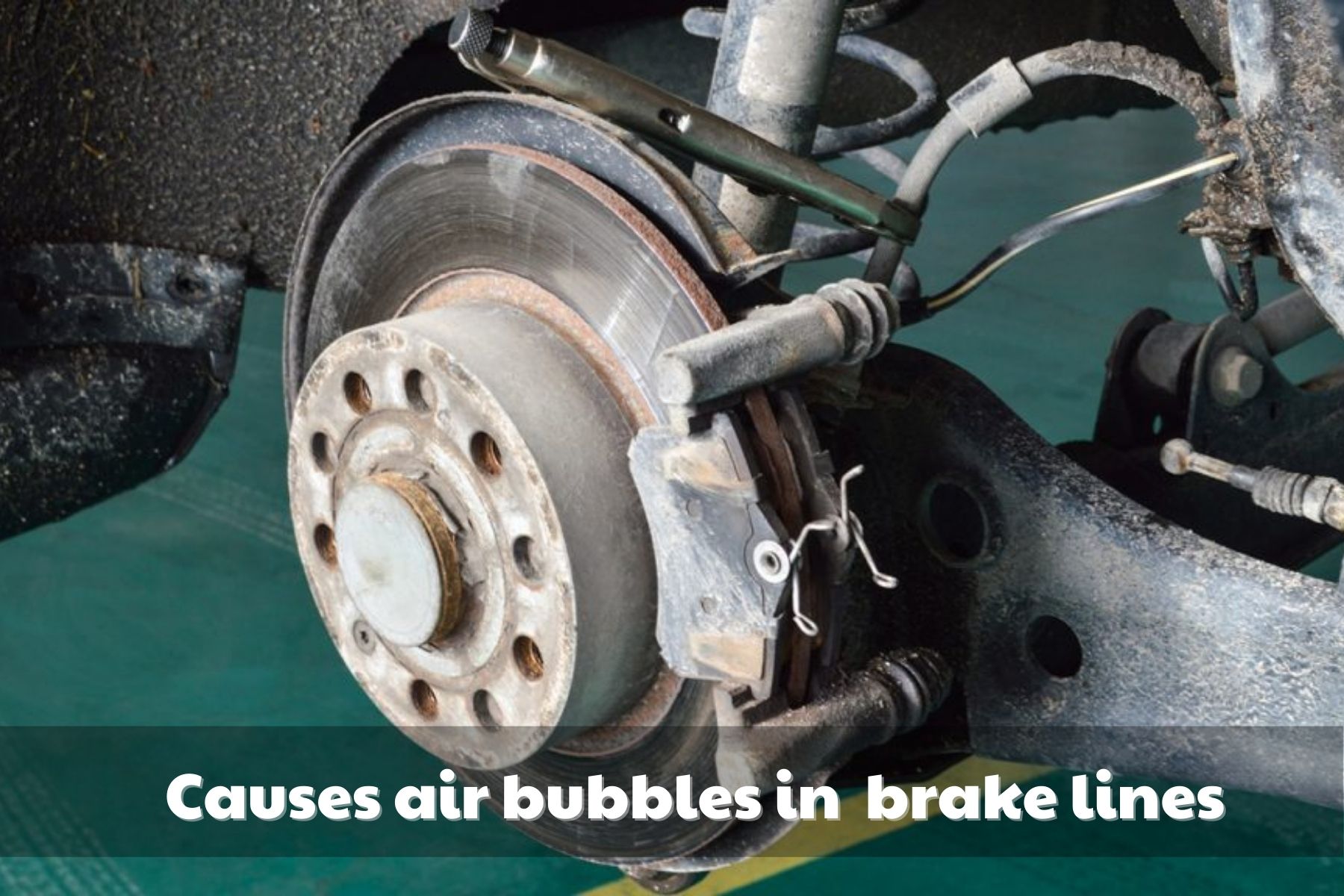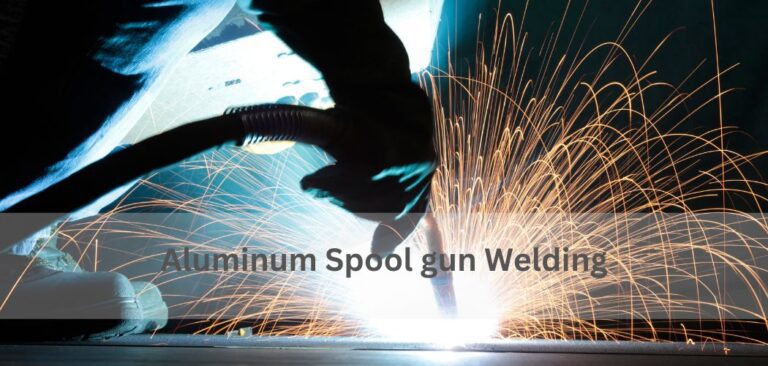How to Get Air Out Brake Lines
To get air out of brake lines, start at the wheel farthest from the master cylinder. Open the bleeder valve and let the air escape while adding fresh brake fluid.
Ensuring optimal brake performance is crucial for the safety of your vehicle and passengers. When air gets trapped in the brake lines, it can cause spongy brakes or a loss of braking power. By following a few simple steps, you can effectively remove air from the brake lines and restore proper brake function.
We will discuss the importance of removing air from brake lines and provide a step-by-step guide on how to do it effectively. Read on to learn how to get air out of your brake lines and keep your vehicle running smoothly and safely.
Why Air In Brake Lines Is A Problem
Why Air in Brake Lines is a Problem
Reduced Braking Performance
Air in the brake lines can lead to reduced braking performance, compromising the driver’s ability to safely stop the vehicle in emergency situations.
Soft Or Spongy Brake Pedal
The presence of air in the brake lines may result in a soft or spongy brake pedal, making it difficult for the driver to maintain precise control over braking and increasing the risk of accidents.
Increased Stopping Distance
When there’s air in the brake lines, the stopping distance of the vehicle may increase, posing a significant danger to occupants and other road users.

Credit: bradscartunes.com
Identifying Air In Brake Lines
To properly address air in your brake lines, the first step is identifying its presence. Common signs include the feel of the brake pedal, leakage of brake fluid, and bubbling or gurgling sounds.
Brake Pedal Feel
If your brake pedal feels soft or spongy, this could indicate the presence of air in the brake lines. A firm and responsive brake pedal is essential for safe braking performance.
Brake Fluid Leakage
Leaking brake fluid around the wheels or under the vehicle is a clear sign of a potential air in the brake lines. Any fluid loss must be promptly addressed to maintain braking effectiveness.
Bubbling Or Gurgling Sounds
Unusual noises such as bubbling or gurgling when pressing the brake pedal can indicate the presence of air trapped in the brake system. These sounds should not be ignored and need immediate attention.
Tools And Materials Needed
Air in brake lines can compromise the braking system of your vehicle, leading to unsafe driving conditions. To effectively remove air from your brake lines, you will need the following tools and materials:
Bleeder Kit
- Essential for properly bleeding the brakes to remove air pockets.
Wrenches
- Ensure you have the appropriate wrench size for your vehicle’s brake bleeder valve.
Brake Fluid
- High-quality brake fluid compatible with your vehicle’s specifications.
Clear Plastic Tubing
- Allows you to see air bubbles escaping from the brake lines during the bleeding process.

Credit: www.wikihow.com
Step-by-step Guide To Bleeding Brake Lines
When it comes to maintaining your vehicle’s brakes, it’s essential to keep the brake lines free of air, ensuring optimal braking performance. Bleeding the brake lines is a crucial maintenance task that should be done whenever air is present in the system. Follow this step-by-step guide to learn how to bleed brake lines effectively.
Preparing The Vehicle
Before you start the bleeding process, park your vehicle on a level surface and engage the parking brake. Also, ensure that the car is safely and securely supported with wheel chocks to prevent any unexpected movement.
Locating The Bleeder Screws
Each brake caliper will have a bleeder screw located at the highest point. These screws are typically located at the back of the caliper and are used to release the trapped air from the brake lines.
Attaching The Bleeder Kit
Attach a clear plastic hose to the bleeder screw and place the other end into a container filled with brake fluid to prevent air from being drawn back into the system during the bleeding process. Having a dedicated bleeder kit with a one-way valve can make this step even easier.
Bleeding The Brake Lines
With the bleeder kit in place, have a helper slowly press the brake pedal while you open the bleeder screw to release the air and old brake fluid. Continue this process until clear, bubble-free fluid flows through the hose, then close the bleeder screw before releasing the brake pedal.
Checking And Topping Up Brake Fluid
After bleeding all the brake lines, it’s crucial to check the brake fluid level in the master cylinder reservoir and top it up to the recommended level using the appropriate type of brake fluid to ensure the braking system is properly filled.
Preventing Air In Brake Lines
To prevent air in brake lines, follow these steps to get the air out: 1. Start by locating the brake bleeder valve on each brake caliper or wheel cylinder. 2. Attach a clear, flexible hose to the valve and place the other end in a container with brake fluid.
3. Have someone pump the brake pedal a few times, then hold it down. 4. Open the valve to release the air and fluid, closing it before the pedal hits the floor. 5. Repeat this process for each wheel until no more air bubbles appear.
Preventing air in brake lines is crucial for maintaining the efficiency and safety of your vehicle’s braking system. Air bubbles can compromise the functionality of your brakes, causing spongy or unresponsive braking, which can be extremely dangerous. By following a few simple steps and incorporating regular maintenance practices, you can help keep your brake lines air-free and ensure optimal performance.
Regular Brake System Maintenance
Maintaining your brake system at regular intervals is essential to prevent air from entering the brake lines. Regularly inspect your brake pads, rotors, and calipers for wear and tear. Replace any components that show signs of damage or excessive wear.
Furthermore, it is crucial to keep an eye on the brake fluid level and quality. Brake fluid attracts moisture from the air, which can lead to air bubbles in the brake lines. Regularly check the brake fluid level and top it up if necessary. Always follow the manufacturer’s recommendations for the type and grade of brake fluid suitable for your vehicle.
Proper Bleeding Techniques
Bleeding the brake system is a vital step in removing air from the brake lines. Whether you are performing routine maintenance or after certain repairs, following proper bleeding techniques is crucial.
First, locate the brake bleeder valve on each brake caliper or wheel cylinder. Attach a clear plastic tube to the valve and place the other end in a container to collect the old brake fluid. With the help of a partner, depress the brake pedal slowly, while you start by opening the bleeder valve slightly with a wrench.
Continue to press the brake pedal until the fluid flows steadily from the tube without air bubbles. Then, close the bleeder valve before releasing the brake pedal. Repeat this process for all four wheels, starting with the brake farthest from the master cylinder.
Using High-quality Brake Fluid
Using high-quality brake fluid is paramount in preventing air in your brake lines. Inferior or contaminated brake fluid can introduce air bubbles into the system, compromising its performance.
Ensure you use brake fluid that meets or exceeds the specifications recommended by your vehicle’s manufacturer. It is worth investing in a reputable brand that guarantees a high boiling point, low moisture absorption, and reliable lubrication properties. Regularly replace the brake fluid as per the manufacturer’s guidelines to maintain its effectiveness and prevent air from entering the brake lines.
Inspecting For Leaks
Regularly inspecting your brake system for leaks is another crucial step in preventing air in brake lines. Even a small leak can allow air to enter the system and compromise your brakes’ performance.
Check for any signs of brake fluid leaks, such as dampness or wet spots around the brake lines, calipers, or master cylinder. Additionally, pay attention to any changes in brake pedal feel or uneven braking, as they may indicate a potential leak. If you suspect a leak, address it immediately by repairing or replacing the affected component.
By adhering to these preventive measures, you can minimize the likelihood of air in brake lines, ensuring that your vehicle’s braking system functions optimally and guaranteeing your safety on the road.

Credit: www.wikihow.com
Frequently Asked Questions Of How To Get Air Out Brake Lines
How Do You Get Air Out Of Brake Lines Fast?
To quickly remove air from brake lines, use a pressure or vacuum bleeder. First, attach the bleeder to the brake bleeder valve, then pump the brake pedal to expel the air. Repeat the process until all air is gone. Finally, check the brake fluid level and top it up if necessary.
How Do You Drain Air From A Brake Line?
To drain air from a brake line, locate the bleeder valve, attach a clear tube, and open the valve. Pump the brake pedal slowly to expel air. Close the valve once only brake fluid flows through the tube. Top off the brake fluid reservoir.
How Do I Get The Pressure Back In My Brake Lines?
To restore pressure in your brake lines, bleed the system by releasing air trapped inside. Use a brake bleeding kit or enlist help from a professional mechanic.
How Long Does It Take To Bleed Air Out Of Brake Lines?
It usually takes about 30 minutes to 1 hour to bleed air out of brake lines. However, it may vary based on the vehicle’s make and model. Regularly check the brake fluid level during the process.
How Do You Know If You Have Air In Your Brake Lines?
To check if there’s air in your brake lines, look out for spongy brakes, longer stopping distances, or a brake pedal that feels soft.
Can Air In Brake Lines Cause Brake Failure?
Yes, air in brake lines can compromise your braking system, leading to brake failure and increased stopping distances.
What Is The Process Of Bleeding Air From Brake Lines?
Bleeding the brakes involves using a wrench to open the brake bleeder valve and allowing fluid to flow out, removing any air bubbles in the process.
Conclusion
Properly bleeding your brake lines is crucial for optimal vehicle performance and safety. By following the steps outlined in this guide, you can effectively remove air from the brake lines and ensure smooth and reliable braking. Maintaining your vehicle’s braking system is an essential part of regular maintenance, and by knowing how to get air out of brake lines, you can keep your car running smoothly and safely.


